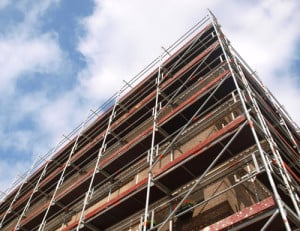
An industrial IoT service model will allow commercial building owners and managers to move away from a reactive break-fix model to a more predictive approach.
In the United States, commercial buildings account for 72 percent of total electricity use and 36 percent of natural gas use and account for 40 percent of CO2 emissions, more than any other sector. These figures show the need to adopt technologies that facilitate the reduction of energy consumption without sacrificing occupant comfort and is a goal that all building operators are striving towards.
The advent of technological drivers such as cloud computing, big data collection, storage and analysis; micro-sensing systems that facilitate low-power computing and networking, and advanced analytic techniques in the form of deep learning and artificial intelligence; all have all fueled the digital transformation of enterprises through what we refer today as the Internet of Things (IoT).
While it’s well-established that IoT is shaping up to transform businesses in virtually every industry, the challenge for the IoT industry is finding a starting point that will not just provide incremental value to the business, but transformational value. In this blog post, we will outline an industrial IoT (IIoT) service model for commercial buildings, which we refer to as Building Automation as a Service (BAaaS) that will allow building service providers to shift their business model from a reactive break-fix model to a “Building Automation-as-a-Service” pro-active model.
Repairs as a service
To elaborate, rather than providing reactive building repair services for a building as is the current status quo for the most part, service providers can instead sell a monthly subscription for a consistent ambient temperature throughout the building (for e.g. 69-72 degrees F) or guarantee any other quality of service metric that can be quantified. The service provider can be either a vendor selling building systems, or a contractor leasing buildings to tenants.
[ Related: How to Get the Most From the Industrial IoT ]
Furthermore, the payment model could be such that should operating costs come down, then a certain percentage of the reduced operating costs go to the service provider as fees for providing BAaaS (perhaps on top of some nominal baseline fee). This offers incentives to service providers to actually ensure that the guaranteed quality of service is delivered. We postulate that such a model will have wide spread applicability and benefits all stake holders: building system vendors, service providers, and occupants alike. Furthermore, this could have the ancillary societal benefit of reducing greenhouse gas emissions towards which buildings are a significant contributor as noted above.
Achieving a robust and profitable BAaaS model would require architecting a technical solution based on all of the above digital technologies that comprise IoT. The idea being that by using the insights derived from analyzing data from IoT sensors deployed throughout a building, including thermostats, sensors in heating, ventilation, and air-conditioning (HVAC) systems, air quality sensors, and a range of other IoT devices, all the building systems will be maintained, optimized and pro-actively repaired to keep the building within the contracted quality of service. This creates a more predictable revenue stream for building service providers, as well as a vastly improved occupant experience for building tenants leading to their increased productivity.
[ Related: Industrial IoT Risks You Shouldn’t Ignore ]
At the core of BAaaS is the utilization of the vast amounts of IoT data gathered, augmenting that with other unstructured data such as building logs, including those from building operations staff, specific video segments recorded by building cameras in response to events etc, and subjecting that data to advanced deep learning and artificial intelligence based analysis techniques to generate a range of value-add outcomes. These include the following:
- Proactively determining anomalies in building systems well in advance of catastrophic breakdown. One of the key benefits of deep learning is the ability to find patterns and correlations in large amount of seemingly unconnected, disparate data sets, and doing so automatically, without manual intervention.
- AI techniques can not only detect anomalies, but actually find the root-cause that for those anomalies.
- Furthermore, AI techniques can actually provide self-correcting mechanisms to eliminate anomalies. Many-a-times, this involves ensuring that building systems are operating at their design specifications and pro-actively changing set points and configurations to account for drift in operating parameters leading to wastage and inefficiencies. For example, most building system controllers are based on the well-known proportional, derivative, integral (PID) control paradigm. However, PID controllers must be tuned to ensure optimal performance. But over time, the tuning parameters tend to drift leading sub-optimal, inefficient performance resulting in enormous energy wastage to deliver the same quality of service. To avoid this, retuning of PID controller parameters must be undertaken often. In building parlance, this is referred to as ‘continuous commissioning’, but rather than doing so manually or semi-manually, AI-based techniques can automate the entire process.
- Another key facet of AI is to determine if manual intervention is absolutely essential in certain circumstance, and if so, match the skills required to correct anomalies with those of technicians currently available on duty, and automatically generate work orders.
- AI can analyze weather reports to optimize building temperatures, and regulate a room’s temperature based on thermodynamics such as sunlight, conditions outside, and occupancy. This is especially crucial to take advantage of the changing nature of the cost of electricity during the day. So Strategies such as pre-cooling or pre-heating can be employed when electricity prices are low, so that HVAC systems can be throttled down during period of high electric costs, and thermal inertia ensures that adequate quality of service is maintained.
- Finally, services could include providing continuous feedback to building occupants on their energy usage in manner that provides actionable advice on how to reduce energy consumption without compromising comfort. For example., by disaggregating building energy consumption by zone, by room, different end uses (lighting, heating, cooling etc). Studies have shown that providing energy use feedback in and of itself serves as a motivating factor for building occupants to change their behavior and conserve energy.
In conclusion, we believe that the BAaaS model based on state-of-the-art IoT technologies have the potential to realize the promise of energy efficiency and curtailment of green-house gas emissions. However, technology alone will not be sufficient, and as discussed in this blog, an adequate business model is of paramount importance to enable the success and wide spread adoption of BAaaS.
[1] https://www1.eere.energy.gov/buildings/publications/pdfs/corporate/bt_stateindustry.pdf
[2] http://www.eesi.org/files/climate.pdf





























